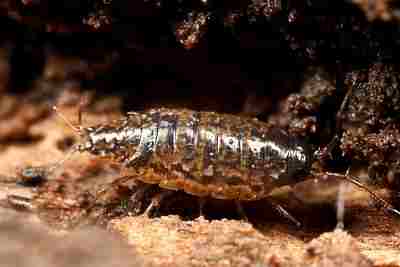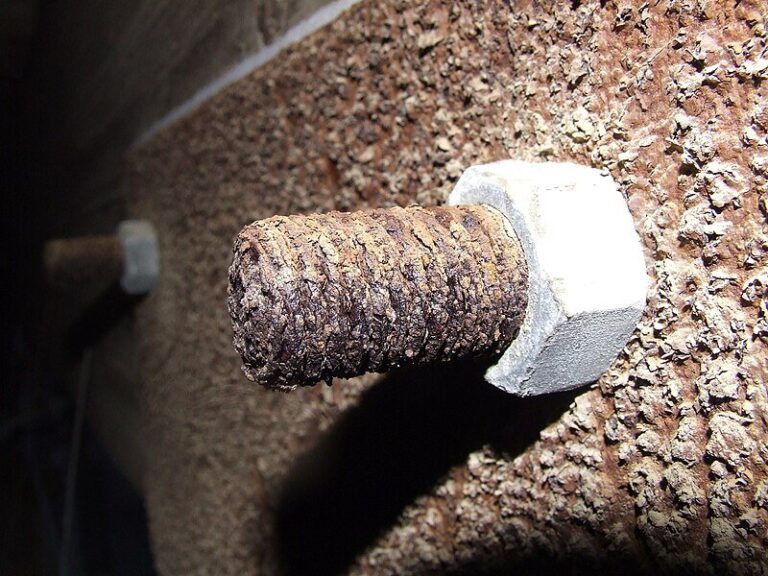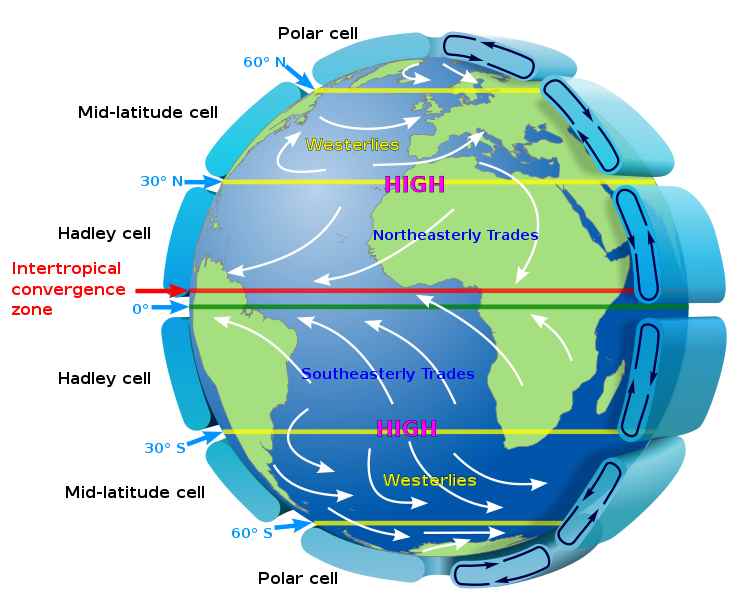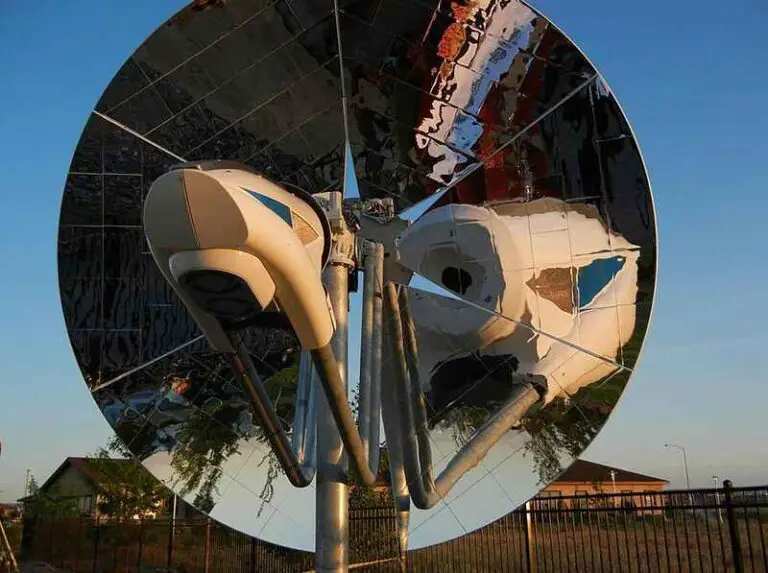Forest Energy Pyramid Components and Their Contributions
Forest energy pyramid comprises of producers, primary consumers, secondary consumers, tertiary consumers, and quaternary consumers. It is influenced by the contributions of decomposers to energy dynamics, as well as by processes of energy loss according to the ten percent rule.
This article discusses the forest energy pyramid in terms of its biotic components and their respective contributions, as follows;
1). Producers: Biotic Components of the Forest Energy Pyramid
Producers in a forest ecosystem are the biotic foundation of the food chain, and have a critical contribution to resource availability and energy transfer within this ecosystem. This section discusses how producers contribute to energy flow, through the various levels of the forest food chain.
Overview of Forest Primary Producers
Primary producers in a forest ecosystem are mainly green (vascular and non vascular) plants, including trees, shrubs, vines, lianas, mosses, ferns, and various understory autotrophs [1].
These plants are equipped with chlorophyll; which is a pigment that enables photosynthesis, the process by which they convert solar radiation, water, and carbon dioxide into chemical bioenergy in the form of glucose [2].
Photosynthesis is the key mechanism by which light energy from the sun is captured and transformed into a biologically usable form within the ecosystem.

Photosynthesis in Forest Producers
Photosynthesis is the primary process by which energy is produced in natural ecosystems like forests (including tropical rainforests, boreal forests and temperate deciduous forests). During this process, green plants utilize light from the sun, to convert inorganic raw materials like carbon dioxide and water, into glucose (a monomeric organic compound or sugar) and oxygen.
The energy stored in glucose is used by the plant for its routine metabolism, growth, and reproduction. Some of this energy is stored as biomass in the form of tissues in leaves, stems, and roots, or in non vascular organelles.
Role of Forest Producers in Energy Transfer
Transfer of energy resources from autotrophs in a forest ecosystem, occurs as primary producers are consumed by herbivores, which are the primary consumers in the food chain.
Primary consumers, such as ungulates, insects, and herbivorous rodents, obtain their energy by feeding on plant parts like leaves, fruits, seeds and roots.
Secondary consumers, including lower predators like owls, foxes, and carnivorous insects, then feed on the primary consumers, transferring energy up the food chain.
Lastly the tertiary consumers, if present, further transfer energy by preying on primary and secondary consumers. These feeding-based transfer processes all commence with (and depend on) autotrophic photosynthesis.
When plants and animals in the forest produce waste, shed body parts, or die; their organic remains become a source of energy for decomposers, such as fungi, bacteria, and detritivores like terrestrial isopods like woodlice, myriapods like millipedes [3] and annelids like earthworms.

Decomposers break down organic matter, thereby releasing energy and nutrients back into the ecosystem in a form that can be taken up and utilized by autotrophs like plants.
This nutrient recycling pathway is essential for the health of the forest, and contributes to the availability of energy.
Role of Forest Primary Producers in Food Web Dynamics
Forest ecosystems typically have complex food webs, which comprise various trophic levels interconnected through predation, herbivory, saprophytic feeding, and diverse mutualistic relations.
Energy flows from the basal trophic level (occupied by producers) to higher trophic levels (occupied by consumers), but tends to decrease in total magnitude with each transfer, following the Ten Percent Rule, where only about 10 percent of energy is passed to the next trophic level.
2). Primary Consumers in a Forest Ecosystem
Primary consumers are an essential biotic component of forest ecosystems, and have a critical role in the transfer of energy and cycling of nutrients.
These organisms are herbivores that directly feed on producers, which in a forest ecosystem (as earlier stated) are typically plants, including shrubs, trees, and various herbaceous species. Here, some key points about primary consumers in a forest energy pyramid are discussed.
Examples and Energy-Related Functions of Forest Primary Consumers
Within a forest ecosystem, primary consumers usually include a diverse range of herbivorous organisms. Common examples of these herbivores are ungulates (like deer), insects like caterpillars, and various small mammals including squirrels and rabbits. These animals obtain their bioenergy by consuming parts (and products) of forest plants like leaves, bark, roots, stems, fruits, and seeds.
Typically, primary consumers occupy the second trophic level in the food chain/energy pyramid, directly above the primary producers (autotrophs). They have an important function with respect to transferring energy from plants to higher trophic levels in the ecosystem. Through herbivory, they harvest the energy stored in plant tissues and convert it into their own biomass [5].
Primary consumers are responsible for harvesting a portion of the energy originally captured during photosynthesis by plants. However, in line with the ten percent rule, only about 10% of the energy stored in plant material is successfully passed on to primary consumers. This energy is then available for the overlying trophic level, which may be occupied by secondary consumers, such as carnivores.
In forest ecosystems, primary consumers are interconnected with various plant species. They feed on a diversity of plants, and different species of primary consumer may have distinct preferences for specific species of plants [6]. This interplay between the two groups, contributes to the complexity of the forest food web.
Asides energy transfer, another function that can be attributed to primary consumers in forests is nutrient cycling. As they consume and subsequently excrete plant material, these herbivores release nutrients back into the ecosystem through their waste products. Eventually, nutrients stored in their biomass is release through biodegradation after their death.
Due to their vital ecological functions, changes in the population of primary consumers can have cascading effects on the entire ecosystem. For example, an increase in the deer population may lead to overgrazing [7], thereby affecting the abundance, areal coverage, and species richness of plant communities.
Overview of Forest Primary Consumers and Energy Flow Facilitation
Primary consumers in a forest ecosystem include animals like deer, rabbits, squirrels, insects (like caterpillars), and various small mammals that primarily feed on plants.
There are multiple consumer levels and groups in a forest ecosystem. Four examples of these include primary consumers (deer, grasshoppers, rabbits), secondary consumers (snakes, foxes, hawks), and tertiary consumers (eagles, leopards). Others such as scavengers (turkey vultures), and decomposers (mushrooms, detritivorous insects, microorganisms) may also be classified as consumers.
The energy that is taken up by primary consumers is chemical stored energy derived through photosynthesis, and contained in plant tissues.
Primary consumers, as herbivores, are a critical link in the flow of energy through forest ecosystems, as they connect non-herbivorous consumers to producers which are the main energy resource. This ultimately supports the vitality and functionality of the entire ecosystem.
3). Secondary Consumers: Biotic Components of the Forest Energy Pyramid
Secondary consumers are an important component of forest food webs, biomass pyramids and energy dynamics, as they are significant in their contribution toward energy availability and transfer. This section discusses how secondary consumers contribute to such ecological processes.
Definition and Role(s) of Forest Secondary Consumers
Secondary consumers are animals that mainly feed on primary consumers; which themselves are herbivores that consume plants as their primary source of energy.
The secondary consumers are often referred to as carnivores; as they predominantly survive on biomass from other heterotrophic organisms.
Roles of secondary consumers in a forest ecosystem can be said to include energy transfer, biodiversity sustenance, and energy conversion.
Energy transfer in a forest ecosystem simply entails the flow of chemical energy from primary producers (plants) to primary consumers (herbivores) and then to secondary consumers and other predatory organisms.
Secondary consumers obtain their own energy by preying on primary consumers below them. This energy transfer is a critical step that contributes to sustainability of the food chain.
A diverse range of secondary consumers can be found in forest ecosystems, including snakes, birds of prey (like owls and hawks), frogs, raccoons, and various other carnivorous mammals. Differences in the composition and richness of species that serve as secondary consumers, may be observed from one geographic region or type of forest, to another.

These secondary consumers occupy the third trophic level within the hierarchy of the ecosystem, contributing to the complexity and equilibrium of the energy pyramid.
Secondary consumers convert the energy stored in tissues of primary consumers (which, in turn, is derived from primary producers) into resources for their own growth, sustenance, and reproduction.
They simultaneously contribute to controlling the population of primary consumers or herbivores, which prevents overpopulation and overgrazing, and maintains the gross productivity of the forest ecosystem.
Relationship of Forest Secondary Consumers With Apex Predators
In some cases, tertiary and/or quaternary consumers, also called top predators, may exist in forest ecosystems, especially in biodiverse regions like the tropics and subtropics, where climatic conditions and resource-availability are favorable toward organic survival. These predators are animals that consume both primary and secondary consumers.
Top predators, such as leopards, tigers, wolves and bobcats, are at the highest trophic level(s) in the forest ecosystem.
It is important to note that not all the energy from primary consumers is transferred successfully to secondary consumers. According to the Ten Percent Rule (which also applies here), only about 10 percent of energy is passed from one trophic level to the overlying one.
This rule reflects the estimated average energy loss that occurs as resources are converted and transferred up the food chain.
4). Tertiary Consumers in a Forest Ecosystem: Their Contributions to Energy Availability and Transfer
Tertiary consumers are a vital component of forest ecosystems, due to their roles in energy availability and transfer.
How Tertiary Consumers Contribute to Energy Availability and Transfer
Tertiary consumers contribute to energy-related processes in forest ecosystems by contributing to biodiversity, converting energy from biomass; and recycling nutrients, among other functions.
A brief definition of these consumers is given as follows;
Tertiary consumers are organisms that occupy the fourth (and sometimes; highest) trophic level within a food web or chain in an ecosystem, which could be aquatic like rivers, lakes and ponds, or terrestrial; like deserts, forests and grasslands.
They are typically carnivores and feed on both secondary consumers (carnivorous or omnivorous animals that consume primary consumers) and primary consumers (herbivores that feed on plants).
Many forest ecosystems have a diverse range of tertiary consumers, which include carnivorous mammals, reptiles, and large birds of prey.
Examples of forest tertiary consumers may include coyotes, eagles, and felines like leopards, jaguars and cougars. The presence and designation of these organisms are often location-specific; so that for example, coyotes may be either absent, or may function as secondary (rather than tertiary) consumers in some forested regions.
Tertiary consumers serve as critical instruments for sustainability in the forest ecosystem, by converting the energy stored in lower trophic levels (secondary and primary consumers) into resources for their own growth, routine metabolism, and generational continuity.
They help to regulate the populations of both primary and secondary consumers, influencing herbivorous, carnivorous and (indirectly) autotrophic populations.
Tertiary Consumers as Top Predators: Role, Energy Efficiency and Ecological Impact
Tertiary consumers are considered top predators in habitats where they have few or no natural predators themselves. This includes some relatively less-complex forest ecosystems.
They are responsible for controlling the populations of other species and maintaining ecological balance.
In similar manner to secondary consumers, tertiary consumers do not capture all the energy from the organisms they consume. The Ten Percent Rule applies at this level, meaning that only about 10 percent of energy is transferred from primary or secondary consumers, to tertiary consumers.
This rule accounts for the energy loss that occurs due to heat dissipation, incomplete digestion, and waste production, as energy is converted and transferred up the pyramid.
In terms of their ecological impact, tertiary consumers are essential for controlling the abundance, distribution and behavior of herbivorous organisms, and preventing overgrazing, which can have cascading effects on plant communities. They may also regulate predation in the forest ecosystem by secondary consumers, which they compete against and prey upon.
The presence of tertiary consumers ensures a balanced and functioning forest ecosystem.
5). Quaternary Consumers: Biotic Components of the Forest Energy Pyramid
Quaternary consumers are found in the highest trophic level of a forest energy pyramid, and they are both unique and critical in the contribution to energy availability and transfer within this ecosystem. An exploration of their contributions is undertaken in this section.
Forest Quaternary Consumers and Their Contributions to Energy Dynamics/Ecosystem Sustenance
Quaternary consumers are organisms that occupy the fifth (and usually the topmost) level of the trophic hierarchy within a forest ecosystem.
They are apex predators, meaning they have no natural predators within their natural environment.
Quaternary consumers have the ability to prey on autotrophic organisms from all lower trophic levels, including primary, secondary, and tertiary consumers, and indirectly depend on producers. This broad dietary range gives them the flexibility to feed on various species within the ecosystem, and reduces the effects of resource depletion and similar ecologic hazards, on quaternary consumers.
Two examples of quaternary consumers in forests are tiger and black bear, which are native species in subtropical/tropical and temperate forests respectively [10].

Quaternary consumers are efficient harvesters of energy because they can obtain resources from multiple trophic levels. They contribute to energy transfer by capturing the energy stored in the body parts of organisms from lower trophic levels and transforming it into their own stored energy.
As the ultimate apex predators, quaternary consumers help to regulate the populations of all lower species within the ecosystem.
By preying on primary, secondary and tertiary consumers, they indirectly influence plant populations, which in turn determine the structure and biotic composition of the forest ecosystem.
Quaternary consumers are essential for maintaining biodiversity, by preventing any single species from multiplying too exponentially and dominating the ecosystem. Their presence and activities therefore promote species diversity and ecological equilibrium within the forest.
The predator-prey interactions between quaternary consumers and their prey species are fundamental to the ecological dynamics of the forest, and often lead to coevolutionary adaptations [4].
Like other consumers in the forest energy pyramid, quaternary consumers do not capture all the energy from the organisms they feed on. The Ten Percent Rule explains losses that occur at this level, where only about 10 percent of energy is transferred from lower consumers to the apex of the pyramid.
In spite of the relatively minimal amount of energy available to them, their position at the top of the food chain allows quaternary consumer to survive by harnessing the energy resources from a wide range of prey species.
Contribution(s) of Decomposers to Energy Dynamics in the Forest Ecosystem
Decomposers are also critical in supporting the energy pyramid within a forest ecosystem.
The energy pyramid, also known as the ecological pyramid or trophic pyramid, is a graphical representation of the trend of flow of energy through different trophic levels in an ecosystem. It illustrates how energy is transferred from one level to another, commencing with primary producers and progressing through various categories of consumers.
Here, an elaborate outline of how decomposers fit into the forest energy pyramid, is provided, along with the summary of producers and consumers below;
*Summary of Producers and Consumers in Forests
Primary Producers (Plants) occur at the base of the energy pyramid. In a forest ecosystem, these organisms are primarily green plants. These plants capture light energy from the sun through photosynthesis, transforming it into chemical energy in the form of carbohydrates (such as glucose). This energy constitutes the foundation of the pyramid.
Primary Consumers (Herbivores) occupy the next trophic level and consist of both vertebrate and invertebrate herbivores, which feed directly on the primary producers (plants). These herbivores include insects, rodents and large ungulates. They obtain energy by directly consuming plant material.
Secondary Consumers (Carnivores and Omnivores) are above the herbivores, and can be carnivores or omnivores. Carnivores, such as predatory birds, reptiles or felines, feed on herbivores. Omnivores, like racoons, opossums and bears, have a diet that includes both plant and animal matter.
Tertiary Consumers (Top Predators) are present in many forest ecosystems, and function as high-level predators that feed on other carnivores or omnivores. These animals sometimes occupy the highest trophic level in the forest ecosystem.
*How Decomposers Support the Forest Energy Pyramid
Decomposers support the energy pyramid through their various ecological functions, which include; waste management, nutrient cycling, and detoxification.
Bacteria, fungi, and detritivores like millipedes and earthworms, are vital for the efficient cycling of nutrients and energy in the forest ecosystem. When plants and animals die, these decomposers break down their organic remains. Bacteria and fungi are particularly effective for such functions, releasing enzymes to degrade complex organic compounds into simpler products.
As decomposers break down organic substrates, they release nutrients such as carbon, nitrogen, sulfur and phosphorus back into the soil [8]. These nutrients are then taken up by plant roots, thereby supporting the growth of primary producers.
During decomposition, energy stored in organic matter is usually released. While most of this energy is lost as heat, some of it becomes available to be used by other organisms within the ecosystem.
Detoxification is another function of decomposers, which help detoxify the environment by degrading and neutralizing harmful organic compounds in their substrates.
Decomposers produce waste products, including humus (organic material) or nutrient-rich detritus. This enriched waste is crucial for plant growth.
Energy Loss and the Ten Percent Rule in Forest Ecosystems
Energy loss and the ten percent rule are both core ecological concepts that describe how energy flows through ecosystems, including forests.
Energy flows through ecosystems in a unidirectional manner, from one trophic level to the overlying one. However, at each trophic level, a significant amount of energy is lost as it is transferred between organisms through feeding. This loss of energy occurs for multiple reasons, including metabolic processes, indigestible material, incomplete consumption, and heat loss.
Organisms at every trophic level require energy for their own metabolic processes, such as growth, respiration and reproduction. This energy is not successfully passed on to the next trophic level, and is lost as heat.
An instance of energy loss due to incomplete or inefficient digestion can be cited with primary consumers/herbivores. When these herbivores consume plant material, they are often unable to digest all of it. Some complex components, such as cellulose in plant cell walls, are often indigestible and pass through the organism's digestive system without breaking down or providing energy [9].
Another instance can be viewed among predatory organisms. These predators often do not consume their prey entirely. Rather, they may eat only certain parts, such as muscle tissue, leaving behind fur, bones, hooves, feathers, or other inedible parts.
As energy is transferred from one organism to another, some of it is lost as heat due to inefficiencies in energy conversion as well as by dissipation as heat during metabolic (and catabolic) processes.
*Brief Illustration of the Ten Percent Rule
The ten percent rule (already mentioned in other sections) is a simplification used here to estimate the amount of energy transferred from one trophic level to the next. According to this rule, approximately only ten percent of the energy available to organisms at a given trophic level is transferred successfully to the higher organisms in the next trophic level.
An illustration of this rule is outlined briefly below;
If about 100 kJ of energy is available to autotrophs at the primary producer level (such as vascular plants in a forest), only about 10 kJ of energy will be passed on to herbivores (primary consumers) that feed on the plants.
Of these 10 kJ gained by herbivores, only about 1 kJ of energy will be transferred to secondary consumers, which are carnivores that prey on herbivores.
The pattern continues as outlined above, with each trophic level receiving only about 10 percent of the energy available at the level below it.
The ten percent rule highlights the natural inefficiency of energy transfer in ecosystems. It also explains why food chains and food webs are typically able to support only a few trophic levels, since the continuous losses reduce availability of resources to sustain many levels of consumers.
In forest ecosystems, as already shown, these principles are applicable. Primary producers, such as trees and shrubs, capture solar energy through photosynthesis. Herbivores feed on these plants, and carnivores/omnivores may feed on herbivores. At each step in the transfer chain, energy is lost, and only a fraction is passed on. This understanding of energy flow and loss is very useful for evaluating and conserving forest habitats and their biodiversity.
Conclusion
The forest energy pyramid comprises of;
1. Producers
2. Primary Consumers
3. Secondary Consumers
4. Tertiary Consumers
5. Quaternary Consumers
It is also influenced by;
Contribution(s) of Decomposers to Energy Dynamics
Energy Loss and the Ten Percent Rule
References
1). Burns, K. C.; Dawson, J. (2005). "Patterns in the distribution of epiphytes and vines in a New Zealand forest." Austral Ecology 30(8):883 - 891. Available at: https://doi.org/10.1111/j.1442-9993.2005.01532.x. (Accessed 29 September 2023).
2). Davis, M.; Hidayati, N. (2020). "Carbon dioxide absorption and physiological characteristics of selected tropical lowland tree species for revegetation." IOP Conference Series Earth and Environmental Science 591(1). The 7th Symposium of JAPAN-ASEAN Science Technology Innovation Platform (JASTIP) 24 October 2019, Tangerang, Indonesia, ICE Tangerang, Banten.. Available at: https://doi.org/10.1088/1755-1315/591/1/012039. (Accessed 29 September 2023).
3). De Smedt, P.; Wuyts, K.; Baeten, L.; De Schrijver, A.; Proesmans, W.; De Frenne, P.; Ampoorter, E.; Remy, E.; Gijbels, M.; Hermy, M.; Bonte, D.; Verheven, K. (2016). "Complementary distribution patterns of arthropod detritivores (woodlice and millipedes) along forest edge-to-interior gradients." Insect Conservation and Diversity 9(5). Available at: https://doi.org/10.1111/icad.12183. (Accessed 29 September 2023).
4). Flaxman, S. M.; Lou, Y.; Meyer, F. G. (2011). "Evolutionary ecology of movement by predators and prey." Theoretical Ecology 4(2):255-267. Available at: https://doi.org/10.1007/s12080-011-0120-6. (Accessed 29 September 2023).
5). Gutiérrez, Y.; Ott, D.; Scherber, C. (2020). "Direct and indirect effects of plant diversity and phenoxy herbicide application on the development and reproduction of a polyphagous herbivore." Springer Nature, Scientific Reports 10(1). Available at: https://doi.org/10.1038/s41598-020-64252-5. (Accessed 29 September 2023).
6). Ho, C.-K.; Pennings, S. C. (2013). "Preference and Performance in Plant–Herbivore Interactions across Latitude–A Study in U.S. Atlantic Salt Marshes." PLoS ONE 8(3):e59829. Available at: https://doi.org/10.1371/journal.pone.0059829. (Accessed 29 September 2023).
7). Hynes, K. E.; Koh, S.; Mclachlan, S. M.; Timciska, M.; Bazely, D. R. (2002). "Shedding Light on the Problem of Deer Overgrazing in Carolinian Forests." In Bondrup, S., Munro, N., Nelson, G., Martin-Willison, J. H., Herman, T. B. and Eagles, P. (eds). Refereed Proceedings of the 4th International Conference on the Science and Management of Protected Areas Conference, 2002. pp. 285-291. Available at: http://hdl.handle.net/10315/9864. (Accessed 29 September 2023).
8). Marklein, A.; Winbourne, J. B.; Enders, S. K.; Gonzalez, D. J. X.; van Huysen, T.; Izquierdo, J. E.; Light, D. R.; Liptzin, D.; Miller, K. E.; Morford, S. L.; Norton, R. A.; Houlton, B. Z. (2016). "Mineralization ratios of nitrogen and phosphorus from decomposing litter in temperate versus tropical forests." Global Ecology and Biogeography 25(3):n/a-n/a. Available at: https://doi.org/10.1111/geb.12414. (Accessed 29 September 2023).
9). Oliveira, K.; Costa, C.; Bittar, C. M. M.; dos Santos, V. P.; Oliveira, V. A. B.; de Sá, J. C. (2012). "Indigestible cellulose and lignin in determining feces production and apparent digestibility in horses." Acta Scientiarum Animal Sciences 34(3):267-272. Available at: https://doi.org/10.4025/actascianimsci.v34i3.10577. (Accessed 29 September 2023).
10). Ullah, Z.; Said, A.; Khan, A. M.; Ullah, A.; Noreen, S.; Mahmood, S. (2023). "Altitudinal distribution and seasonal migration of asiatic black bear (Ursus thibetanus) in kaghan and Siran Valleys, Pakistan." Heliyon. 2023 Jul 7;9(7):e18052. Available at: https://doi.org/10.1016/j.heliyon.2023.e18052. (Accessed 29 September 2023).




